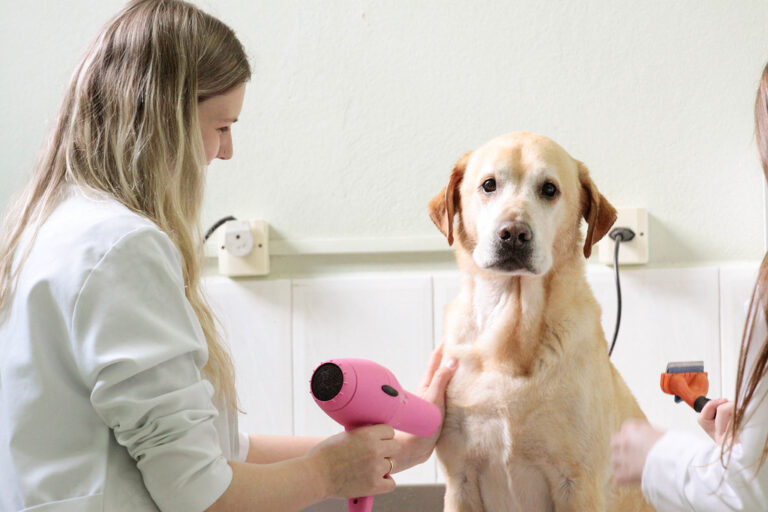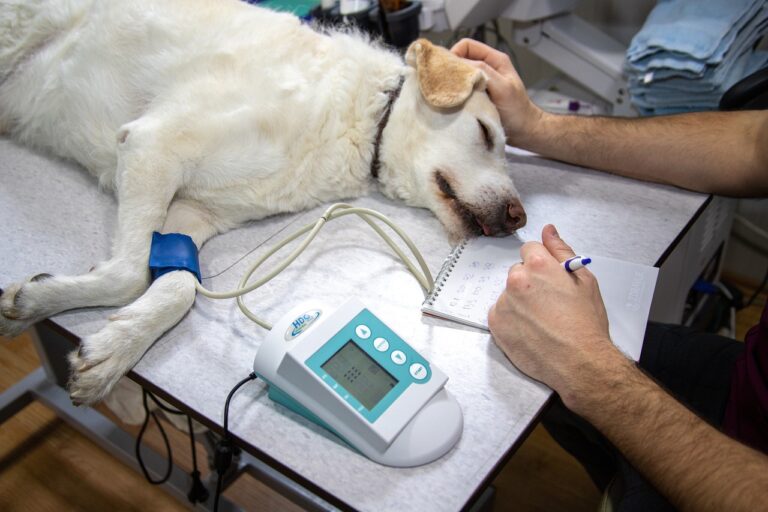Turning the Tide: Resolving Labrador Retriever Behavioral Problems
Understanding Labrador Retriever Behavior
Labrador Retrievers are known for their friendly and outgoing nature, but like any breed, they can exhibit behavior problems. It’s important to understand common behavior problems in Labradors and differentiate between abnormal and natural behaviors.
Common Behavior Problems in Labradors
Many owners experience Labrador behavior problems at some point in their dog’s life, with behavior problems being one of the main reasons why owners give up their dogs (Labrador Training HQ). It’s crucial to be aware of these common issues:
-
Barking: Labradors are known to be vocal dogs, and barking is a natural way for them to communicate. However, excessive barking can become problematic, leading to disturbances and potential conflicts with neighbors. Proper training and providing mental stimulation can help address this issue.
-
Chewing: Labradors have a natural inclination to chew, and it’s a behavior that starts in puppyhood and continues into adulthood. While it’s normal for Labradors to chew on appropriate items like toys, they may resort to destructive chewing if not provided with suitable outlets for their chewing needs. Providing appropriate chew toys and regular exercise can help redirect this behavior.
-
Digging: Labradors have an instinctual drive to dig, which can lead to unsightly holes in the yard. Digging is a natural behavior for Labradors, but it can become problematic if they are not provided with alternative activities and outlets for their energy. Ensuring they have enough physical exercise and mental stimulation can help alleviate this behavior.
-
Separation Anxiety: Labradors are social dogs that thrive on human companionship. When left alone for long periods, they can develop separation anxiety, resulting in destructive behaviors and excessive barking. Gradual desensitization and providing mental and physical stimulation before leaving can help manage separation anxiety.
Differentiating Between Abnormal and Natural Behaviors
It’s important to recognize the difference between abnormal behaviors that are true behavior problems and natural behaviors that may be mistaken as problems due to unrealistic expectations or lack of structure and training (Labrador Training HQ). Some behaviors that are often misunderstood as problems in Labradors include:
-
Barking: While excessive barking can be problematic, some barking is normal for Labradors. It’s their way of communicating and expressing themselves.
-
Eating Poop: Labradors have a natural curiosity and may engage in coprophagy (eating feces). While it can be unpleasant for owners, it’s a behavior that can be managed through training and providing a balanced diet.
-
Digging: Digging is a normal behavior for Labradors, as they have a history of being hunting and retrieving dogs. It’s important to redirect this behavior to appropriate areas or provide designated digging spots to satisfy their natural instincts.
-
Chasing Small Animals: Labradors have a strong prey drive, which can lead to chasing small animals like squirrels or rabbits. It’s essential to ensure their safety and prevent any harm to wildlife while managing this natural behavior through training and recall commands.
Understanding the natural behaviors and drives of Labradors can help owners set realistic expectations and address true behavior problems effectively. By providing proper training, exercise, mental stimulation, and socialization, many behavior problems can be prevented or managed successfully. For more information on training tips and solutions, refer to our article on training tips for Labrador Retrievers.
Natural Behaviors in Labrador Retrievers
Labrador Retrievers have specific needs, drives, and behaviors that are deeply genetically ingrained. Understanding and addressing these natural behaviors is key to resolving behavioral problems in Labradors. Let’s explore three common natural behaviors in Labrador Retrievers: hyperactivity and exercise needs, mouthiness and chewing behavior, and socialization and isolation.
Hyperactivity and Exercise Needs
Labrador Retrievers are known for their friendly demeanor, intelligence, and boundless energy. They have a natural zest for life, and their energy levels can range from moderate to high, depending on factors such as age, genetics, and overall health (source). Providing adequate exercise is crucial to prevent behavioral issues caused by pent-up energy.
Labradors require a minimum of 30 to 60 minutes of exercise each day, including a mix of aerobic activities and muscle-strengthening exercises. Regular exercise helps maintain their physical health and prevents boredom-related behaviors. Activities such as walking, running, and swimming are excellent options to keep your Labrador mentally and physically stimulated. Gradually introducing running to their routine can be beneficial, but it’s important to consider their age and joint health (source). Swimming is particularly great for Labradors, as it provides a low-impact workout that is easy on their joints and muscles.
Mouthiness and Chewing Behavior
Labradors have a natural inclination to carry objects in their mouths and chew. This behavior is a part of their genetic makeup and can be traced back to their history as retrieving dogs. However, if not properly managed, mouthiness and chewing behavior can become problematic.
Providing appropriate chew toys is essential to redirect their chewing instincts onto appropriate objects. Make sure to choose toys that are safe, durable, and specifically designed for strong chewers. Regularly rotating toys can help keep your Labrador engaged and prevent boredom. Additionally, providing mental stimulation through interactive games and puzzle toys can help satisfy their need for mental activity (Labrador Training HQ).
Socialization and Isolation
Labradors are highly social dogs and thrive on human companionship. They enjoy being part of the family and can develop behavior problems if they are socially isolated and left alone for extended periods. It’s important to provide them with plenty of social interaction, mental stimulation, and opportunities for exercise.
Proper socialization from an early age is crucial for Labradors. Exposing them to new people, animals, and environments in a positive and controlled manner helps them develop into well-rounded and confident dogs. Regular outings to parks, dog-friendly events, and interactions with other dogs can contribute to their socialization process. If you’re unsure about how to socialize your Labrador, consulting a professional dog trainer or behaviorist can provide you with guidance and support (socializing your labrador retriever).
By understanding and addressing the natural behaviors of Labrador Retrievers, you can create a harmonious environment for your furry friend. Providing ample exercise, appropriate chew toys, and opportunities for socialization are essential for their overall well-being. Remember, each Labrador is unique, so it’s important to observe and understand your individual dog’s needs to tailor your approach accordingly.
Addressing Abnormal Behavior Problems
Labrador Retrievers, like any other breed, can sometimes exhibit abnormal behaviors that require attention and intervention. It’s essential to understand and address these issues to ensure the well-being of your Labrador and maintain a harmonious relationship. In this section, we will explore some common abnormal behavior problems in Labrador Retrievers and discuss potential solutions.
Self-Harming and Destructiveness
Certain Labradors may engage in self-harming behaviors or exhibit destructive tendencies. This can include excessive chewing, scratching, or biting themselves, leading to injury. It’s crucial to identify the underlying causes and address them promptly. Consulting with a veterinarian or professional behaviorist is recommended to rule out any medical conditions and develop an appropriate treatment plan.
To mitigate self-harming and destructive behaviors, providing ample physical and mental stimulation is vital. Ensuring your Labrador receives sufficient exercise, such as daily walks and playtime, can help channel their energy in a positive way. Additionally, offering interactive toys and engaging in training sessions or puzzle games can provide mental stimulation and reduce boredom. For more information on addressing destructive behaviors, refer to our article on training tips for Labrador Retrievers.
Aggression and Socialization
Aggression in Labrador Retrievers can be a concerning issue that requires careful attention. It’s essential to differentiate between different types of aggression, such as fear aggression or resource guarding, to understand the underlying triggers. Seeking assistance from a professional trainer or behaviorist is highly recommended to assess the situation and develop an appropriate behavior modification plan.
Proper socialization plays a crucial role in preventing aggression and promoting positive interactions with other dogs, animals, and people. Gradually exposing your Labrador to various environments, experiences, and individuals from an early age can help them develop confidence and reduce the likelihood of aggressive behaviors. Our article on socializing your Labrador Retriever provides valuable insights and tips for effective socialization.
House Training and Compulsive Behaviors
House training issues and compulsive behaviors can also be challenging for Labrador Retriever owners. Going to the toilet inside the home can be a result of incomplete or inconsistent house training. It’s important to establish a consistent routine, provide frequent opportunities for outdoor bathroom breaks, and reinforce positive behavior with rewards and praise.
Compulsive behaviors, such as excessive licking, tail chasing, or repetitive movements, can indicate underlying anxiety or stress. Identifying the triggers and implementing counterconditioning techniques can help alleviate these behaviors. Seeking guidance from a professional behaviorist or veterinarian with experience in behavioral issues is crucial in addressing and managing compulsive behaviors effectively.
If you’re facing issues with house training or compulsive behaviors, it’s recommended to consult our article on labrador retriever puppy care guide for comprehensive information on training and behavior management.
By recognizing and addressing abnormal behavior problems in Labrador Retrievers, you can provide the necessary support and guidance to help them lead a happy and fulfilling life. Seeking professional assistance, implementing positive reinforcement training methods, and ensuring proper mental and physical exercise are essential steps in resolving these issues. Remember, patience, consistency, and a compassionate approach are key to overcoming these challenges and fostering a strong bond with your Labrador Retriever.
Training and Behavioral Solutions
When it comes to addressing Labrador Retriever behavioral problems, there are effective training and behavioral solutions that can help you and your furry friend live harmoniously. By implementing positive reinforcement training methods, maintaining consistency and boundaries, and providing mental stimulation and enrichment activities, you can help your Labrador Retriever develop desirable behaviors and overcome any challenges they may face.
Positive Reinforcement Training Methods
Positive reinforcement training methods involve rewarding good behavior to encourage it, rather than solely punishing undesirable behavior. This approach focuses on reinforcing the behaviors you want to see more of, which helps your Labrador Retriever understand what is expected of them. Rewards can include treats, praise, or playtime, and they serve as powerful motivators to reinforce positive behaviors. By consistently rewarding your Labrador Retriever for their good behavior, you can effectively shape their actions and build a strong bond based on trust and cooperation.
Consistency and Boundaries
Consistency is key when it comes to training Labrador Retrievers. By establishing clear rules and boundaries and consistently enforcing them, you provide your furry friend with a sense of structure and predictability. This helps them understand what is acceptable behavior and what is not. Make sure that everyone in your household is on the same page and follows the same training guidelines. Inconsistency can confuse your Labrador Retriever and hinder their progress. By being consistent in your expectations and responses, you set your Labrador Retriever up for success.
Mental Stimulation and Enrichment Activities
Labrador Retrievers are intelligent and active dogs that thrive on mental stimulation. Providing them with appropriate mental enrichment activities is essential to prevent behavioral problems. Engaging your Labrador Retriever in activities such as puzzle toys, scent work, training sessions, and interactive games can keep them mentally engaged and fulfilled. Mental stimulation not only helps prevent boredom but also redirects their energy towards positive outlets, reducing the likelihood of destructive or undesirable behaviors.
By incorporating these training and behavioral solutions into your Labrador Retriever’s routine, you can effectively address and mitigate behavioral problems. Remember that each dog is unique, and it may take time and patience to see progress. If you’re facing challenges or need additional guidance, seeking professional help from dog trainers or behaviorists can provide valuable expertise and tailored advice to meet your Labrador Retriever’s specific needs.
For more information on training and caring for Labrador Retrievers, check out our articles on training tips for Labrador Retrievers, exercise needs of Labrador Retrievers, and the importance of regular health check-ups for Labradors.
Seeking Professional Help
When dealing with behavioral problems in your Labrador Retriever, seeking professional help can be invaluable in finding effective solutions. Professional trainers and behaviorists have the expertise and experience to address a wide range of behavioral issues and provide guidance tailored to your specific situation.
Working with Dog Trainers
Professional dog trainers play a crucial role in resolving behavioral problems in Labrador Retrievers. They can help you establish leadership and effective communication with your dog, which is essential for addressing behavioral issues (Upstate Canine). Through positive reinforcement training methods, trainers can teach you how to reward desired behaviors and discourage unwanted ones. They can also guide you in setting consistent boundaries and establishing routines that support positive behavior.
Trainers can assist with specific concerns such as aggression, reactivity, excessive barking, and whining. By identifying triggers and implementing behavior modification strategies, trainers can help you manage and address these behavioral issues effectively (Upstate Canine). Remember, professional trainers can provide guidance on training techniques, but it’s crucial for you as the owner to continue reinforcing the training methods at home.
Behaviorists and Vet Assistance
For more complex behavioral problems or issues that require a deeper understanding of your Labrador Retriever’s behavior, consulting with a behaviorist or seeking assistance from your veterinarian is recommended (The Labrador Site). Behaviorists are professionals who specialize in studying and modifying animal behavior. They can conduct thorough assessments of your Labrador’s behavior and provide individualized behavior modification plans.
Your veterinarian can also assist you in addressing behavioral issues by ruling out any underlying medical causes that may contribute to the problem. They can provide guidance on behavior modification techniques and may recommend medications or supplements if necessary.
Remember, professional help should always be sought with the best interest of your Labrador Retriever in mind. These experts can guide you on the appropriate strategies and techniques to improve your dog’s behavior and strengthen the bond between you and your furry companion.
Exercise Needs of Labrador Retrievers
Labrador Retrievers are known for their friendly demeanor, intelligence, and boundless energy, which demands careful attention to their exercise needs (source). Understanding the energy levels and exercise requirements of Labradors is essential for keeping them happy, healthy, and well-behaved. In this section, we will explore the energy levels and exercise requirements specific to Labrador Retrievers, as well as the importance of mental stimulation.
Energy Levels and Exercise Requirements
Labradors have a natural zest for life, and their energy levels can range from moderate to high, influenced by factors such as age, genetics, and overall health (source). It’s important to note that a lack of physical exercise can lead to behavioral problems in Labradors, such as excessive barking, chewing, or restlessness.
To keep your Labrador healthy and content, they require a minimum of 30 to 60 minutes of exercise each day (source). Regular exercise helps them burn off energy, maintain a healthy weight, and prevent boredom-related behaviors. It’s crucial to tailor the exercise routine to your Labrador’s age, fitness level, and any specific health considerations they may have.
Aerobic and Muscle-Strengthening Exercises
Labradors benefit from a variety of aerobic exercises that get their heart rate up and improve cardiovascular health. Activities such as brisk walking, jogging, and playing fetch are excellent choices. These exercises not only provide physical stimulation but also help strengthen their muscles and maintain joint flexibility.
Additionally, incorporating muscle-strengthening exercises into your Labrador’s routine can help improve their overall strength and endurance. Activities like hiking, agility training, and playing tug-of-war can engage their muscles and provide a full-body workout.
Importance of Mental Stimulation
While physical exercise is crucial for Labradors, mental stimulation is equally important. Neglecting their mental needs can lead to behavioral issues and restlessness (source). Labradors are intelligent dogs that thrive on mental challenges and problem-solving activities.
Including interactive toys, puzzle games, and obedience training sessions in your Labrador’s routine can provide the mental stimulation they need. These activities engage their minds, prevent boredom, and promote overall cognitive health.
Remember, the exercise needs of Labradors may vary based on individual factors, so it’s important to observe your dog’s behavior and adjust their exercise routine accordingly. Regular exercise not only keeps them physically fit but also helps create a strong bond between you and your furry companion.
In the next section, we will explore specific exercises that are well-suited for Labradors, including walking, running, swimming, and gradual introduction of running.
Key Exercises for Labradors
To keep your Labrador Retriever happy and healthy, it’s important to provide them with regular exercise that meets their specific needs. Labrador Retrievers are known for their friendly demeanor, intelligence, and boundless energy, which demands careful attention to their exercise requirements (source). In this section, we will explore some key exercises that are beneficial for Labradors.
Walking, Running, and Swimming
Walking is a fundamental exercise for Labradors and should be incorporated into their daily routine. Aim for at least 30 minutes to an hour of brisk walking each day. Walking not only helps to maintain their physical fitness, but it also provides mental stimulation and an opportunity for bonding. Remember to use a sturdy leash and proper walking techniques to ensure a safe and enjoyable experience for both you and your Labrador.
Running is another excellent exercise for Labradors, especially those with higher energy levels. However, it’s important to introduce running gradually, taking into consideration factors such as age and overall health. Start with shorter distances and slower speeds, gradually increasing the intensity as your Labrador builds stamina. Running can be a great way to burn off excess energy and keep your Labrador physically fit.
Swimming is a low-impact exercise that provides a full-body workout for Labradors. It is particularly beneficial for Labradors with joint issues or those who enjoy being in the water. Swimming helps to strengthen muscles, improve cardiovascular health, and is easy on the joints. If you have access to a safe swimming area, such as a pool or a body of water, consider incorporating swimming sessions into your Labrador’s exercise routine.
Gradual Introduction of Running
When introducing running to your Labrador’s exercise routine, it’s important to take a gradual approach. Begin with short running intervals and gradually increase the distance and intensity over time. This helps to prevent overexertion and reduces the risk of injuries. It’s always a good idea to consult with your veterinarian to ensure that your Labrador is physically ready for running and to get personalized recommendations based on their specific needs.
Benefits of Swimming
Swimming offers numerous benefits for Labradors. Not only does it provide a refreshing way to beat the heat, but it also offers a low-impact workout that is gentle on the joints. Some of the benefits of swimming for Labradors include:
- Full-body workout: Swimming engages multiple muscle groups, providing a comprehensive exercise session for your Labrador.
- Cardiovascular health: Swimming is an excellent aerobic exercise that helps to improve cardiovascular fitness and endurance.
- Joint-friendly: The buoyancy of water reduces stress on the joints, making swimming an ideal exercise for Labradors with arthritis or other joint issues.
- Mental stimulation: Swimming provides mental stimulation and can help to alleviate boredom in Labradors, contributing to their overall well-being.
If you’re introducing your Labrador to swimming for the first time, make sure to provide a safe and supervised environment. Not all Labradors are natural swimmers, so it’s important to take it slow and make the experience positive and enjoyable for them.
By incorporating walking, running, and swimming into your Labrador’s exercise routine, you can help them maintain a healthy weight, prevent behavioral problems that arise from excess energy, and enhance their overall well-being. Remember to tailor the exercise intensity and duration to your Labrador’s age, fitness level, and any specific health considerations. Regular exercise, along with a balanced diet and mental stimulation, is key to a happy and well-adjusted Labrador Retriever.
Professional Dog Training for Behavioral Issues
When it comes to addressing behavioral issues in your Labrador Retriever, seeking professional dog training can be a valuable solution. Professional trainers have the expertise to understand and address a wide range of behavioral problems. In this section, we will explore three common behavioral issues that can be effectively resolved through professional dog training.
Establishing Leadership and Communication
Establishing a strong and positive leadership role is crucial in addressing behavioral issues. Professional trainers can help dog owners assert leadership and effectively communicate expectations using body language, tone of voice, and positive reinforcement techniques. By establishing clear boundaries and consistent rules, you can foster a healthy and respectful relationship with your Labrador Retriever. This helps create a sense of security and reduces unwanted behaviors. For more information on training tips for Labrador Retrievers, check out our article on training tips for Labrador Retrievers.
Addressing Aggression and Reactivity
Aggression and reactivity can be challenging behavioral problems to navigate. Professional trainers can help identify triggers and types of aggression, such as fear aggression or resource guarding, and develop behavior modification strategies to manage these behaviors effectively. Through a balanced training approach, education, and desensitization methods, trainers can help you address aggression and reactivity in a safe and controlled manner. For more information on understanding Labrador Retriever temperament, visit our article on understanding Labrador Retriever temperament.
Curbing Excessive Barking and Whining
Excessive barking and whining can be disruptive and frustrating for both you and your Labrador Retriever. Professional trainers can help you understand the reasons behind these behaviors, such as boredom, agitation, seeking attention, or reacting to external stimuli. Through proper training techniques, trainers can provide strategies to address these behaviors effectively, allowing you to establish a more peaceful and harmonious environment at home. For more information on curbing excessive barking and whining, refer to our article on tips for training your Labrador Retriever.
Remember, seeking professional help is not a sign of failure as a dog owner. It is an investment in your Labrador Retriever’s well-being and the development of a positive and balanced relationship. Professional trainers and behaviorists can provide tailored advice and strategies to modify unwanted behaviors and improve the bond between you and your furry companion. If you’re facing severe behavioral problems, don’t hesitate to reach out to a professional for assistance. For more information on the importance of regular health check-ups for Labradors, visit our article on the importance of regular health check-ups for Labradors.






